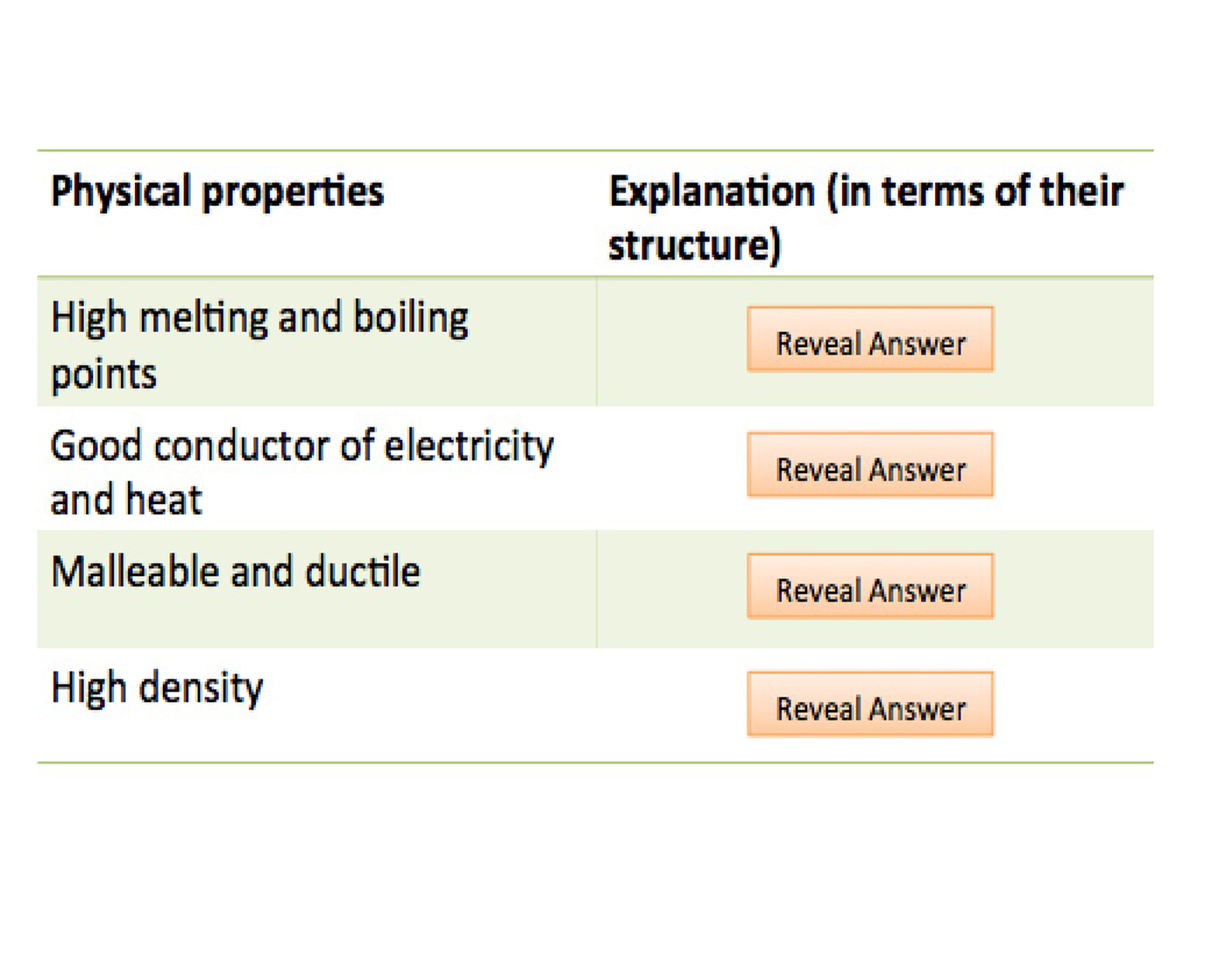A large amount of energy is needed to overcome the strong metallic bonds formed by the electrostatic forces of attraction between the positive ions and the delocalised electrons.

The delocalised electrons can move about freely to conduct electricity or to transfer heat from one point to another quickly.
The layers of atoms can slide over each other easily without disrupting the metallic bonds.
The atoms are closely packed together in a given volume.
In the external circuit, electrons flow from the positive terminal to the negative terminal of the battery during electrolysis.
True.
False.
The smaller the pH value, the stronger the acid.
False.
When acids react with metals, they produce salt and hydrogen gas. Presence of hydrogen gas can be tested using a lighted splint - it will be extinguished with a 'pop' sound in the presence of hydrogen gas.
If salt and water are produced from a reaction with acid, it the other reactant was a base.
True.
Presence of the carbon dioxide can be tested using limewater - white precipitate will form in limewater when carbon dioxide is bubbled into it.
False.
Strength of an acid is determined by the extent of dissociation in water to produce hydrogen ions. Strong acids ionise fully in water to produce a greater concentration of hydrogen ions as compared to weak acids, which only ionise partially.